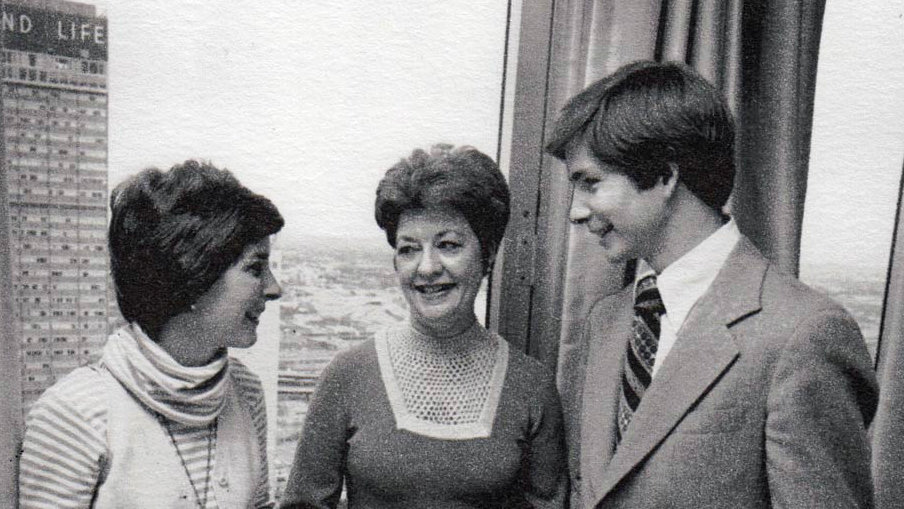In the world of office supplies, whiteout has become a staple for correcting mistakes on paper. But have you ever wondered who invented this handy invention? Well, look no further than Bette Nesmith Graham, a secretary from Dallas, Texas.
Bette Nesmith Graham was a hardworking typist in the 1950s, meticulously typing away on her typewriter. However, like any human, she made her fair share of mistakes. Frustrated by the time-consuming process of having to retype an entire document just to correct a single error, Bette decided to take matters into her own hands.
In 1956, Bette Nesmith Graham came up with a brilliant idea – a liquid that could cover up mistakes on paper. She mixed up a concoction of white tempera paint, water, and a few other secret ingredients. Bette used a small brush to apply this new invention onto the paper, effectively covering up any errors.
This homemade correction fluid worked like a charm, saving Bette time and frustration. She realized that her invention could be a game-changer for typists everywhere. Bette named her creation “Mistake Out” and started making small batches in her kitchen.
Word quickly spread about Bette’s invention, and soon, other typists were requesting her correction fluid. Bette decided to turn her kitchen experiment into a business. She renamed her invention “Liquid Paper” and started selling it to local stationery stores.
Liquid Paper quickly gained popularity, and Bette’s business began to thrive. As demand grew, she recruited family and friends to help with production. Bette’s creation was a game-changer for typists, allowing them to correct errors quickly and efficiently.
In 1979, Bette Nesmith Graham’s hard work and ingenuity paid off when she sold her company to Gillette for a staggering $47.5 million. She also negotiated royalties, which further added to her wealth. Bette went from being a struggling secretary to a successful businesswoman, with a net worth of $25 million.
Bette Nesmith Graham’s invention revolutionized the way mistakes were corrected on paper. Her creation, Liquid Paper, became an office staple and paved the way for other correction fluids on the market. Bette’s ingenuity and determination not only improved her own life but also made the lives of countless typists easier.
So, the next time you reach for that bottle of whiteout to fix a mistake, remember the remarkable story of Bette Nesmith Graham, the secretary turned inventor who changed the game for typists everywhere.
Did Mike Nesmith’s Mom Invented White-out?
Mike Nesmith’s mother, Bette Nesmith Graham, is indeed the inventor of whiteout. Bette Nesmith Graham invented the first correction fluid, known as whiteout, in 1956 while working as a typist. This invention proved to be revolutionary in the field of office supplies and became widely adopted as a means of correcting mistakes made while typing. Bette Nesmith Graham further developed her invention and turned it into a successful product called Liquid Paper.
Liquid Paper, the brand name for Bette Nesmith Graham’s whiteout, became an essential tool in offices worldwide. Its ability to cover up mistakes on typewritten documents greatly improved office efficiency and accuracy. Bette Nesmith Graham’s invention was so successful that it eventually led to her selling the company to Gillette in 1979 for a substantial amount of $47.5 million, along with ongoing royalties.
The invention of whiteout by Bette Nesmith Graham has had a lasting impact on the way mistakes are corrected in written documents. Her innovative solution to a common problem has become a staple in offices, schools, and various other settings where typewriters or printed documents are used.

How Much Money Did Bette Nesmith Graham Make?
Bette Nesmith Graham, the inventor of Liquid Paper, became a successful executive and accumulated a net worth of $25 million.
Conclusion
Bette Nesmith Graham, a secretary in the 1950s, is credited with inventing whiteout, also known as correction fluid. She developed the first version of this product in 1956 while working as a typist. Bette’s invention, called Liquid Paper, revolutionized the way mistakes were corrected on typewritten documents.
Liquid Paper became a widely used and essential office supply, ultimately turning Bette Nesmith Graham into a successful entrepreneur. In 1979, she sold her company to Gillette for an astonishing $47.5 million along with ongoing royalty payments. This tremendous success not only transformed Bette’s life but also showcased the significant impact of her invention on the business world.
Today, whiteout or correction fluid is a ubiquitous tool found in offices and homes worldwide. Bette Nesmith Graham’s invention has had a lasting legacy, simplifying the process of correcting mistakes and improving the overall efficiency of document preparation.
It is worth noting that Bette Nesmith Graham’s son, Michael Nesmith, gained fame as a member of the iconic 1960s band, The Monkees. However, it was Bette’s ingenuity and entrepreneurial spirit that brought her immense success and forever changed the way we correct errors in written communication.
